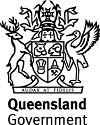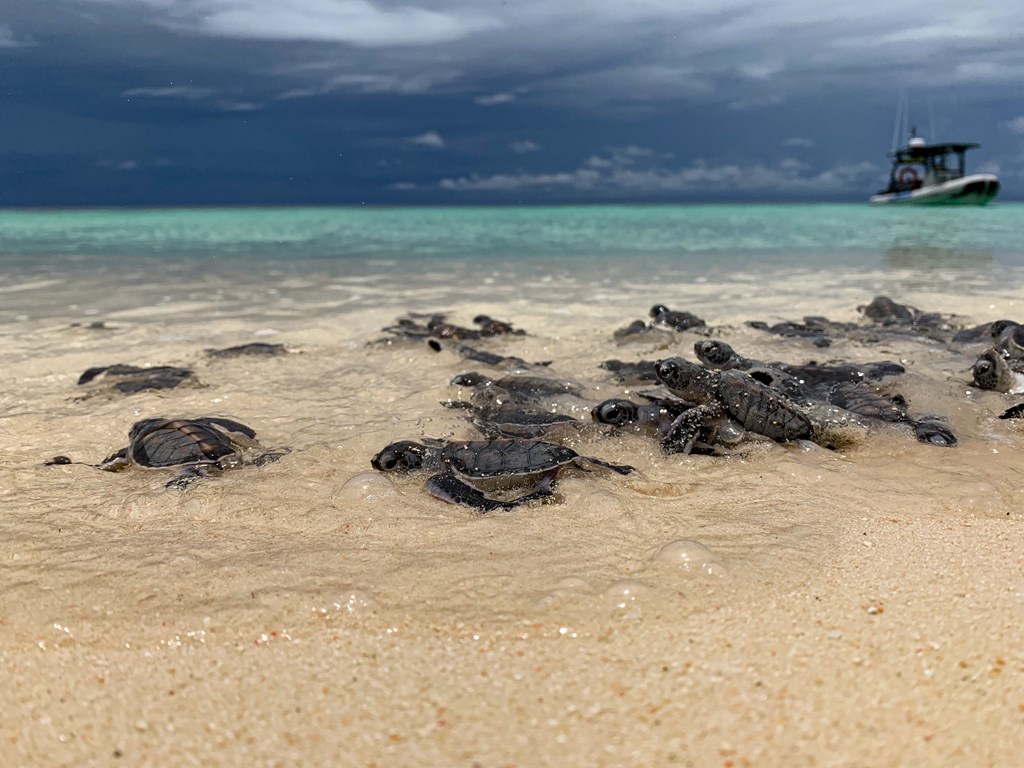Published Wednesday, 23 February, 2022 at 12:41 PM

Minister for the Environment and the Great Barrier Reef and Minister for Science and Youth Affairs
The Honourable Meaghan Scanlon

The Raine Island Recovery Project: a success story for green turtles
In a remote, northern corner of the Great Barrier Reef, restoration work on a small island has helped save hundreds of green turtles and ensured hundreds of thousands of hatchlings have successfully scurried to the ocean.
Minister for Environment and Science Meaghan Scanlon said Raine Island, within Wuthathi Sea Country and Meriam Nations sea country, was potentially the most important green turtle rookery on the planet.
“Raine Island is about 620km north of Cairns and it’s estimated that during a big season up to 100,000 green turtles nest annually on the Island, which is a vegetated coral cay about 27 hectares in size,” Ms Scanlon said.
“The Raine Island Recovery Project began in 2015 to restore and protect the island and help prevent turtle deaths after they had laid their eggs.
“Around 40,000 cubic metres of sand was moved by heavy machinery to reprofile 35,000 square metres of nesting beach and raise it above tidal inundation levels.
“The beach reprofiling works have doubled the amount of viable nesting habitat, saving hundreds of thousands of turtle eggs from being drowned by tidal inundation each nesting season.
“Queensland Parks and Wildlife Service rangers, together with the Traditional Owners have worked tirelessly to prevent nesting turtle deaths from cliff falls by installing 1750m of custom-made turtle proof fencing.”
Chairman of Wuthathi Aboriginal Corporation Mr Keron Murray said Thukuruu (Raine Island) was an important place, ecologically and culturally.
“We have ensured this huge logistical undertaking was not taken lightly or impacted the island’s integrity or our culture by having Wuthathi and Meriam Nation (Ugar, Mer, Erub) Cultural Heritage Advisors onsite to supervise the large-scale sand reprofiling works,” Mr Murray said.
Great Barrier Reef Foundation Managing Director Anna Marsden said we’re proud that by working with our partners on this world-first conservation program we’ve achieved a remarkable turnaround in the green turtle population.
“Because of the project, an additional 640,000 endangered green turtles have already begun life on the Great Barrier Reef, with an additional 4.6 million hatchlings expected to start life on the Reef over the next 10 years,” Ms Marsden said.
“Saving the Reef and all its marine life including turtles is a huge task, but the success of the Raine Island Recovery Project shows that by bringing together science, business, government, reef managers and Traditional Owners, we can make an impact.”
Chairperson of Erubam Le RNTBC, Mr Jimmy Gela, said the Raine Island Recovery Project had been a partnership between the Queensland Government, Wuthathi and Meriam Nation (Ugar, Mer, Erub) Traditional Owners, the Great Barrier Reef Marine Park Authority, BHP and the Great Barrier Reef Foundation.
“This project is an example of how all stakeholders including Wuthathi and Meriam Nation (Ugar, Mer, Erub) Traditional Owners, government and private industry work together in collaboration to achieve one goal,” Mr Gela said.
BHP Mitsubishi Alliance (BMA) Asset President Mauro Neves said BHP is proud to have supported the Raine Island Recovery Project.
“To save so many turtles and have millions more expected to start life on the Great Barrier Reef is a great success,” he said.
“The project highlighted the critical role of innovative solutions and business working with the government and the local community to improve biodiversity on the reef.
“Importantly the project has also paved the way for stronger relationships with the Wuthathi and Meriam Nation (Ugar, Mer, Erub) Traditional Owners.”
Minister Scanlon said the partnership to protect the vulnerable green turtle population has been a stunning success.
“A dedicated turtle rescue crew has ensured turtles ashore at sunrise are returned to the ocean before they die from heat exhaustion on the island, saving the lives of 696 nesting females,” she said.
“The Queensland Government is grateful for the support from all our partners in this fantastic project over the past six years.”
GBRMPA’s A/Director Field Management Strategy Mark Read said the work at Raine Island was a well-documented example of successful Reef intervention.
“These magnificent animals have been around since the dinosaur age but are facing a number of challenges – whether it be hotter sand resulting in more female offspring, or hatchlings not making their way to the ocean,” Dr Read said.
“Raine Island is an excellent example of how human intervention can support critically-important habitats and species and result in positive outcomes that filter through the ecosystem.”
Photos and video are available here: https://www.dropbox.com/sh/z1pab9gi7jgeza5/AADv_tKfreB4B6s_zjBWaZ19a?dl=0
ENDS

